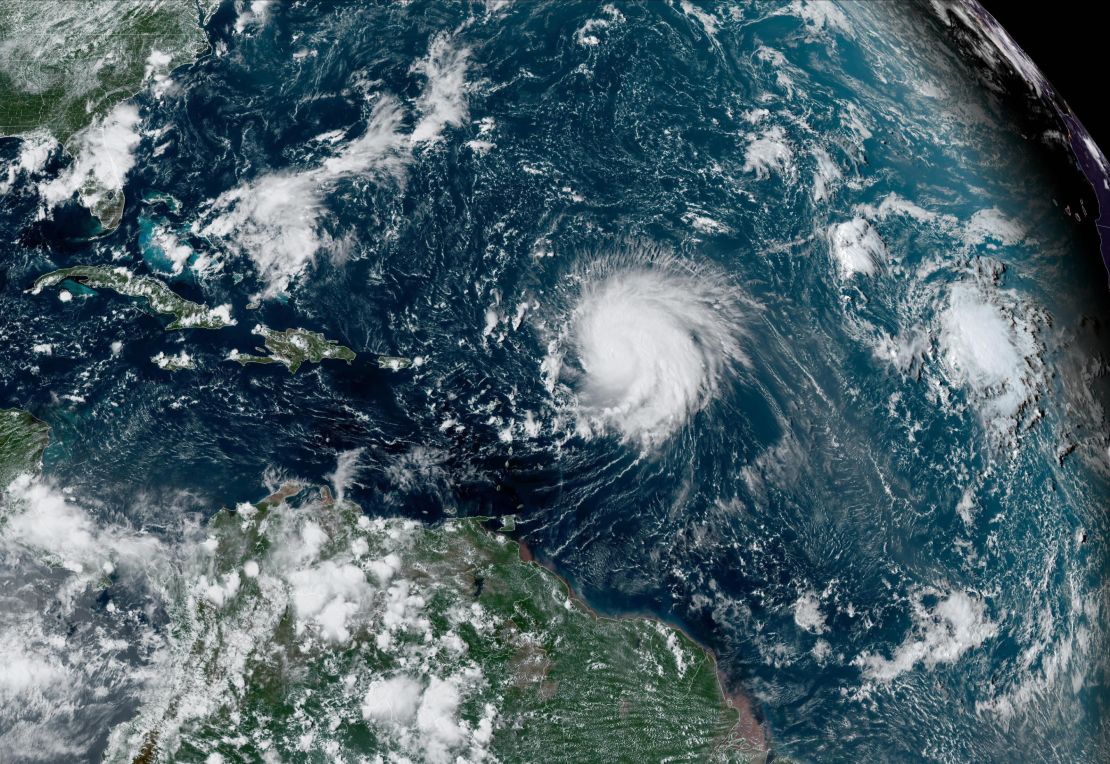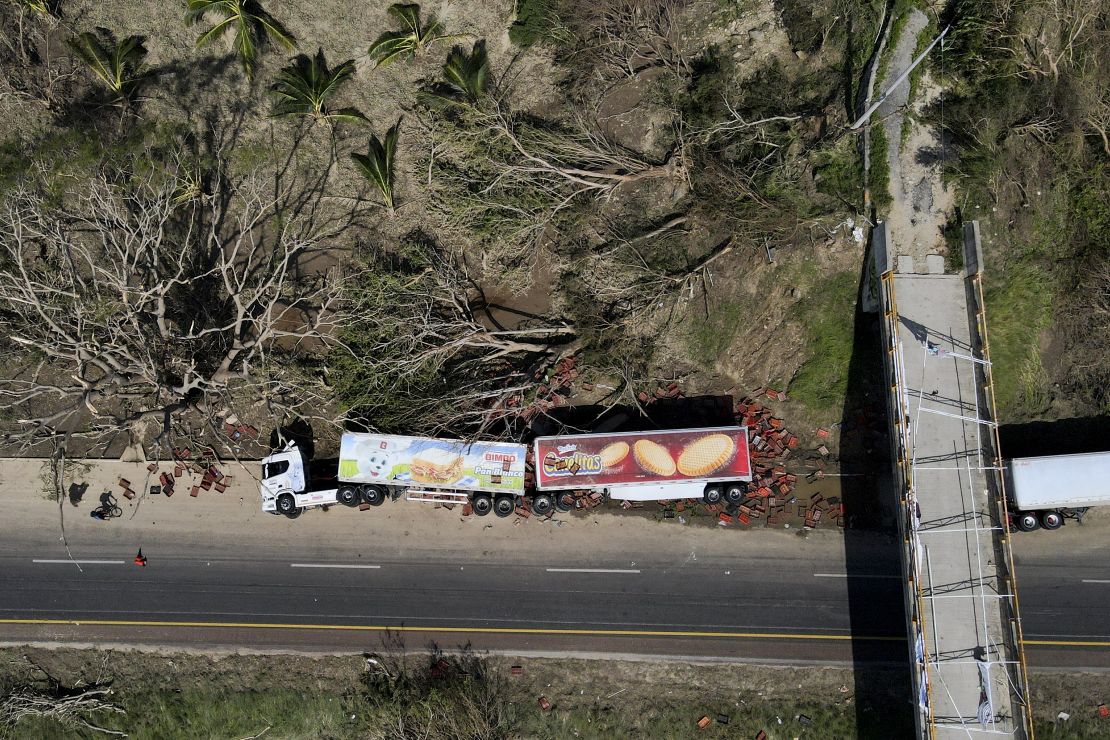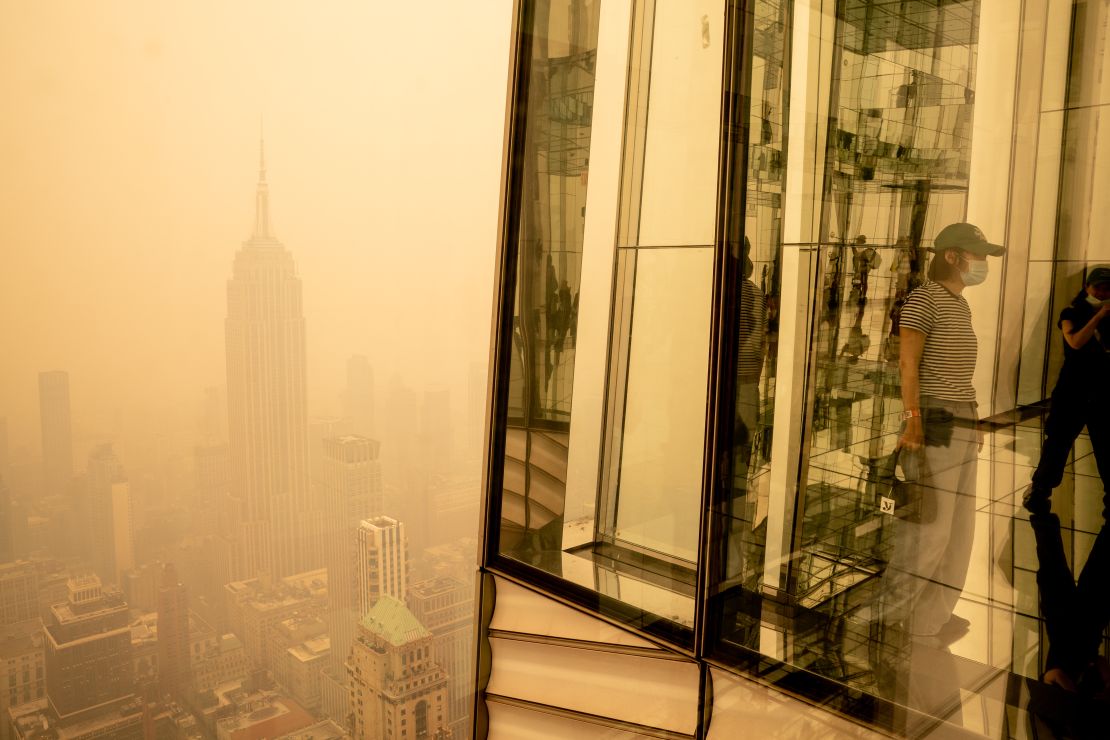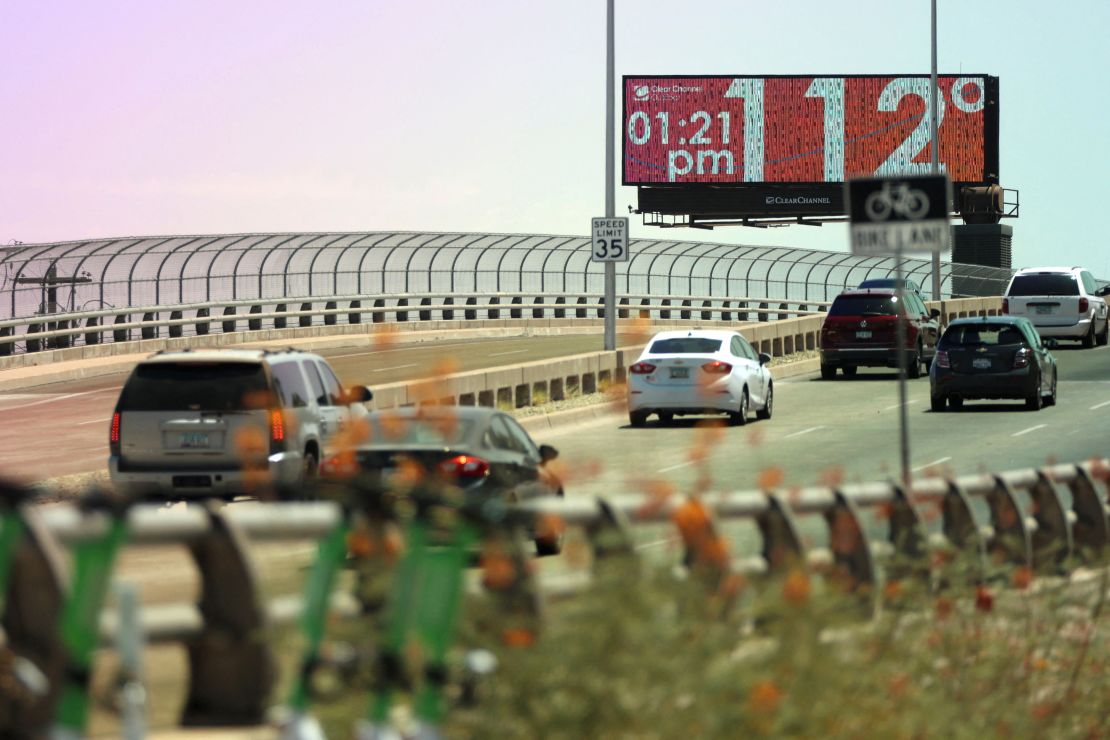In the hottest year on record, the fingerprints of a changing climate in a warming world were all over dozens of extreme weather events.
There wouldn’t be weather without heat; heat is energy, and weather is an expression of that energy, of an atmosphere trying to balance itself. But too much heat in the system raises the limits of what is possible in weather and pushes it toward the extremes.
So it’s maybe no surprise then that this year’s record heat was a “through line” in many of 2023’s most brutal weather events, Kristina Dahl, climate scientist with the Union of Concerned Scientists, told CNN.
“Climate change influences our weather on Earth every day,” Dahl said. “In my mind, the burden of proof now is to show that climate change hasn’t influenced an event, because it’s just so clearly influencing everything around us.”
The extreme weather events of this year are not unique – they’re a sign of what’s to come.
“These types of events will continue to become more frequent and more severe if we continue to warm the planet,” Dahl said.
These are just a few of 2023’s most notable examples of what a warming planet’s extreme weather can look like.
Off-the-charts rapid intensification
Record heat wasn’t just in the air, it made it to the oceans too, which absorb most of Earth’s excess heat.
“Sea surface temperatures were just so much warmer than they have been in any previous year on record,” Dahl said.
Warm water acts like food for storms, and the exceptionally warm ocean water in 2023 not only created more storms in the Atlantic by neutralizing the storm-dampening effects of a strengthening El Niño, but also fueled explosive strengthening of the storms that formed across the globe.
This explosive strengthening, known as rapid intensification, is becoming more likely as the atmosphere warms.
A combined 12 tropical cyclones in the Atlantic and East Pacific basins rapidly intensified in 2023.

Lee was the strongest Atlantic hurricane this season and maxed out as a rare Category 5 hurricane in the open ocean in September after its winds strengthened by a staggering 85 mph in 24 hours. The outburst made Lee the Atlantic’s third-fastest rapidly intensifying storm on record.
Idalia, the only hurricane to make landfall in the US this year, was yet another example of the more frequent rapid intensification of storms right before landfall.
The storm briefly reached Category 4 status before slamming Florida’s Big Bend region as a Category 3 hurricane – the strongest storm to hit there in more than 125 years.

The East Pacific’s Hurricane Otis was the most extreme example of rapid strengthening in either basin this year. Otis’s winds increased by an astounding 115 mph in the 24 hours before its devastating Category 5 landfall in Acapulco, Mexico, in October.
Otis was the strongest Pacific storm to ever strike Mexico and came just two weeks after Category 4 Hurricane Lidia – also a rapid intensifier – made landfall just south of Puerto Vallarta as another one of Pacific Mexico’s strongest storms.
Rapid intensification also helped Hurricane Hilary maintain enough strength to track across California as a tropical storm – the state’s first since 1997. Hilary unloaded a deluge that broke tropical rainfall records in a few states and caused extreme flooding that lingered for months in one of the driest places on Earth.
A historic tragedy in a year of unusual wildfire behavior
Unusual wildfire behavior marked the year, both in where fires started and where they didn’t.
Wildfires typically burn 7 to 8 million acres of land each year in the US, but only charred 2.6 million acres in 2023, National Interagency Fire Center statistics show.
This was due in part to a soaking start to the year in the typically fiery West, which kept wildfires to a minimum after years of destruction. One season a trend does not make, and as the world warms, wildfires are becoming more frequent and severe – particularly in the West, the latest National Climate Assessment notes.
Still, the season proved deadly and destructive as intense heat combined with a lack of rain to dry out soil and leave typically wet parts of the US and much of Canada vulnerable to fire.

Tragedy struck Hawaii’s island of Maui in August in the form of the blazing Lahaina inferno.
Wind-driven flames surged so quickly through drought-parched invasive grasses, engulfing everything in their path, that some people fleeing for their lives had no choice but to jump into the Pacific Ocean. Many could not escape, and the Lahaina Fire became the deadliest on US soil in more than 100 years.
Louisiana is one of the wettest states in the US, but after a summer of endless heat, no tropical systems and little rain, the ground turned to tinder. The tremendous dryness peaked in November when 75% of the state was under exceptional drought – the most expansive such area in state history.
The state endured one of its worst fire seasons in recent decades as a result, according to data provided to CNN by the Louisiana Department of Agriculture and Forestry. Fires in the southern half of the state kept burning into the fall and their smoke fueled “super fog” that caused a fiery, deadly pileup near New Orleans.

Fires also affected much of the US, even when they weren’t burning there.
Canada’s worst wildfire season on record burned an area roughly the size of North Dakota and sent plumes of toxic smoke from its numerous massive fires into the US and all the way to Europe.
The smoke blocked out the sun and sent air quality levels plummeting in June across the Northeast. Apocalyptic, orange skies engulfed New York City as the city briefly had the worst air pollution levels in the world.
The hottest month for any US city in a summer of ‘heat hell’
Heat records were shattered this summer across the Northern Hemisphere, including much of the US. In the US, a series of heat domes roasted the southern and central parts of the country.
The heat index topped 130 degrees in Kansas, New Orleans hit its highest temperature ever recorded – 105 degrees – and much of Texas and Florida baked under exceptionally prolonged extreme heat.
But one city was emblematic of an extreme summer with heat scientists said was “virtually impossible” without human-caused climate change: Phoenix.
July in Phoenix was the hottest month on record for any US city. The city’s average temperature for the month clocked in at an astonishing 102.7 degrees Fahrenheit following brutally hot days and record-warm nights.
Phoenix endured an unprecedented 31 consecutive days with high temperatures at or exceeding 110 degrees.

The heat took a punishing toll.
At least 579 people died in 2023 of heat-related causes in Maricopa County, where Phoenix is located, in what was the deadliest year for heat there since the county began tracking in 2003.
Days where high temperatures exceed 100 degrees are becoming more common across many major US cities as global temperatures rise, but Phoenix has seen the biggest increase of them all. The city averages 18 more days above 100 degrees each year compared to historic averages. That translates to about 111 days above 100 degrees each year.
Supercharged flooding kills thousands
Storm Daniel brought deadly flooding to Greece, Turkey and Bulgaria in September before moving over the Mediterranean Sea and taking aim at Libya. Charged by the warm waters of the Mediterranean, Daniel became a “medicane” – a storm with similar characteristics to hurricanes and typhoons.
The storm unleashed torrential rainfall across Libya and one city recorded 16 inches of rain in just 24 hours. Horrific flooding unfolded as a result, killing an estimated 4,000 people.

The city of Derna was hardest hit. The flooding there burst two dams and unleashed a massive wave of water which swept away much of the city’s core.
The World Weather Attribution initiative – a team of scientists that analyze the role of climate change in the aftermath of extreme weather events – found planet-warming pollution made the deadly rainfall in Libya up to 50 times more likely and 50% worse.
A medicane or even a tropical system isn’t necessary to unleash devastating flooding in a warming world. As the atmosphere continues to warm it’s able to soak up more moisture like a towel and then ring it out in the form of more extreme gushes of flooding rainfall.
This scenario played out multiple times in the US: A train of deadly atmospheric rivers pummeled California in January and March; catastrophic July flooding turned Vermont’s capital city of Montpelier into a raging river and turned deadly in upstate New York; and a month’s worth of rain fell in a matter of hours in New York City in September, sending feet of floodwater surging through parts of the city.
CNN’s Laura Paddison and Nadeen Ebrahim contributed to this report.
https://news.google.com/rss/articles/CBMiVWh0dHBzOi8vd3d3LmNubi5jb20vMjAyMy8xMi8zMC93ZWF0aGVyL2V4dHJlbWUtd2VhdGhlci1jbGltYXRlLWNoYW5nZS0yMDIzL2luZGV4Lmh0bWzSAVlodHRwczovL2FtcC5jbm4uY29tL2Nubi8yMDIzLzEyLzMwL3dlYXRoZXIvZXh0cmVtZS13ZWF0aGVyLWNsaW1hdGUtY2hhbmdlLTIwMjMvaW5kZXguaHRtbA?oc=5
2023-12-30 13:00:00Z
CBMiVWh0dHBzOi8vd3d3LmNubi5jb20vMjAyMy8xMi8zMC93ZWF0aGVyL2V4dHJlbWUtd2VhdGhlci1jbGltYXRlLWNoYW5nZS0yMDIzL2luZGV4Lmh0bWzSAVlodHRwczovL2FtcC5jbm4uY29tL2Nubi8yMDIzLzEyLzMwL3dlYXRoZXIvZXh0cmVtZS13ZWF0aGVyLWNsaW1hdGUtY2hhbmdlLTIwMjMvaW5kZXguaHRtbA
Bagikan Berita Ini















0 Response to "The year’s most extreme weather shows what a warming planet is capable of, and what’s to come - CNN"
Post a Comment